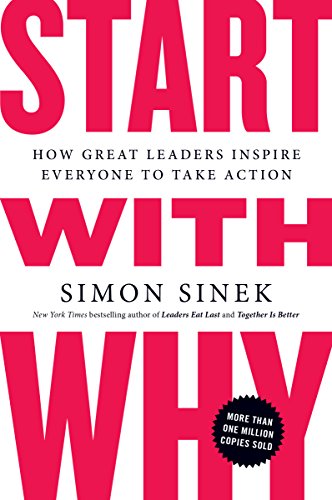

This article is an excerpt from the Shortform summary of "Start With Why" by Simon Sinek. Shortform has the world's best summaries of books you should be reading.
Like this article? Sign up for a free trial here .
How do consumers make purchasing decisions? As a buyer, are you aware of your decision-making process when you decide to buy something? As a seller, how can you exploit the psychology of how consumers make buying decisions?
We’ll cover how consumers make buying decisions and why, in order to sell your product, you need to connect with buyers at the gut level. Learn why buying decisions aren’t always rational.
How Consumers Make Buying Decisions: They Trusting Their Gut
How do consumers make purchasing decisions? It has to do with the Golden Circle.
The reason The Golden Circle works is that the different levels (WHAT, HOW, and WHY) correspond with different levels of the brain: specifically, the neocortex and the limbic brain.
- The neocortex is our analytical center that controls rational thought and language. This corresponds to the WHAT and HOW level of The Golden Circle.
- The limbic brain controls our feelings, like trust and loyalty, but it doesn’t have any capacity for language. It also handles our decision-making processes. This corresponds to the HOW and WHY levels of The Golden Circle.
Because the limbic brain doesn’t use language, it makes it hard for us to put our feelings into words. It’s why we have a hard time talking about the decisions we make. When a choice “feels” right, when we make a decision based on a “gut feeling,” it’s because we’re using our limbic brain. This is how consumers make buying decisions. Once the decision gets made, our neocortex swoops in to try and verbally articulate the way we feel.
- For instance, many may describe their romantic relationship with “she completes me” or “it feels right.” These statements don’t make rational sense, but they feel inexplicably true.
How Do Consumers Make Purchasing Decisions?
To put it simply: decisions start in our limbic brain, and then we articulate and rationalize them using our neocortex. The WHY is how you win a customer’s “heart,” and afterward the WHAT and HOW is how you win their “mind.” This is how consumers make buying decisions.
When you start with why, you target the emotional gut part of a person’s brain. While making decisions by gut may sound wishy-washy, the limbic brain is actually powerful. Studies suggest our gut instinct leads to better, faster decision making. That’s because when we use our neocortex to make decisions, we often end up overthinking them. We try to rationalize our decisions, which often leads to poorer choices.
Examples of How Consumers Make Buying Decisions
Let’s compare rational and gut decision making with example scenarios:
- A Rational Decision: Imagine you’re buying a new television. The sales clerk gives you all the rational, data-driven reasons you should buy a certain model, so you do. But later that day, you run into a friend who has a different television that he loves. Now, you’re not sure whether you made the right decision at all. That’s because you made a choice based only on your neocortex.
- A Gut Decision: For brands that have strong WHYs, people don’t need to articulate their reasons for buying a product. The WHY becomes the reason for the buy. The brand resonates with you emotionally, which makes you confident in your purchase choice. This is the case for people who are passionate Mac users. Their decision to buy a Mac originates in their limbic brain, not their neocortex.
This is how consumers make buying decisions: while we can make decisions with our rational brains only, we are often less confident in our choices. That happens when a company sells us on their WHAT.
But WHY connects to a deep, emotional part of ourselves. WHY leads people to make decisions based on their gut instinct, which in turn helps them feel more confident and satisfied with your choice.
Gut Decisions are Hard to Explain
Because gut decisions are hard to articulate, when your customers explain their decisions, they point to factors that might be misleading for you to act on. Knowing how consumers make buying decisions, don’t trust their rationalizations.
For example, people explaining why they bought a Mac may point to the screen resolution and the features, but really it was a gut, emotional decision based around Apple’s mission.
This is a red herring for companies – just because people explain their decisions in terms of features doesn’t mean giving more features will sway them. In fact, often asking people what they want is misleading. As Henry Ford said, “if I’d asked people what they wanted, they would have said a faster horse.” This is the pitfall that WHAT companies compete on, and they commoditize their products by focusing on easy-to-replicate features. Keep in mind how consumers make buying decisions.
Buying Decision Example: Laundry Detergent
Laundry detergent companies spent years competing on how clean they can get your clothes. Market research showed that people said they were looking for the detergent for the cleanest clothes. Built on this research, brands competed on how well they actually cleaned clothes, experimenting with proprietary additives.
But what people actually wanted was different. Later research showed that people weren’t interested in the detergent that literally got their clothes the cleanest. Instead, they wanted a product that made clothes feel the cleanest. The first action after taking laundry out of the dryer wasn’t to inspect it for cleanliness, it was to smell it. The feeling is stronger than the fact.
This revelation changed the grounds of competition for laundry detergent. They know understood how consumers make buying decisions.
When you start with WHY, you don’t have to have the best, cheapest, most wonderful product. The sense of belonging is a powerful driver that can overcome minor differences in quality.
Loyal customers stick with companies, even when their products are more expensive than their competition (Apple) or take a long time to deliver (Harley-Davidson).
Starting With WHY Creates Lasting Success
How do consumers make purchasing decisions? They go with their gut. And you can sway a consumer’s decisions by being clear about your WHY.
Working The Golden Circle from the inside out – starting with WHY – provides a path to long-term success. It provides a mix of innovation and flexibility that allows a company to adapt to changing circumstances.
Take railroads, for example. In the late 19th century, railroads were some of the biggest companies in America. Their early innovations changed the landscape of the country.
But over time, railroads lost sight of their WHY and instead began focusing on WHAT they were. Instead of defining a WHY of “moving people affordably,” they focused on the WHAT of “railroads and trains.”
So when the airplane was introduced, many of those big railroad companies went out of business. If they’d kept sight of their WHY, the outcome might have been different. They might have realized technology was changing and switched to a better WHAT to meet their WHY. In order to act on how consumers make buying decisions, you need to know your WHY.
This example demonstrates one of the dangers of using The Golden Circle from the outside in. When you lead with WHAT, you become vulnerable to new technologies and trends. It makes it hard for people to see why your products or services have value in the face of change.
This is true for newspapers, publishing, even television. Starting with WHY does more than help you adapt–it helps you innovate, which is the key to lasting success.
Two other reasons that starting with WHY leads to long-term success:
- A WHY is defensible because it generates loyalty. A competitor could copy your WHAT and put out a similar product, but it can’t easily replicate your WHY and rip away your loyal followers.
- If you don’t have a WHY, you become a commodity producing a WHAT, and you’re forced to compete on WHAT factors like price, features, or quality. It becomes hard to succeed on these fronts in the long term.
Understanding how consumers make buying decisions can help you develop a WHY that resonates with them.
———End of Preview———

Like what you just read? Read the rest of the world's best summary of "Start With Why" at Shortform . Learn the book's critical concepts in 20 minutes or less .
Here's what you'll find in our full Start With Why summary :
- What Steve Jobs did right compared to every other business leader
- How to define your organization's WHY
- How to help your organization avoid losing its edge as it succeeds






